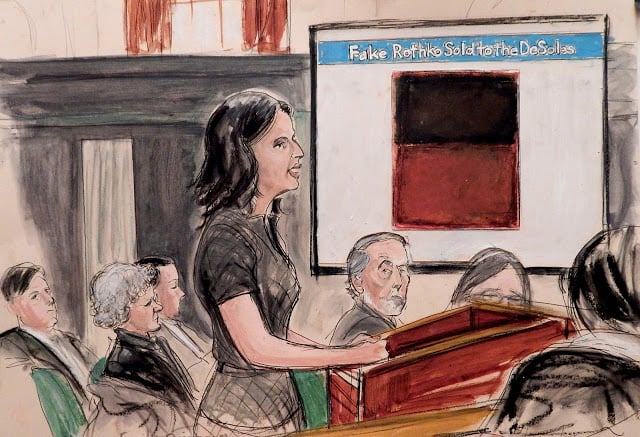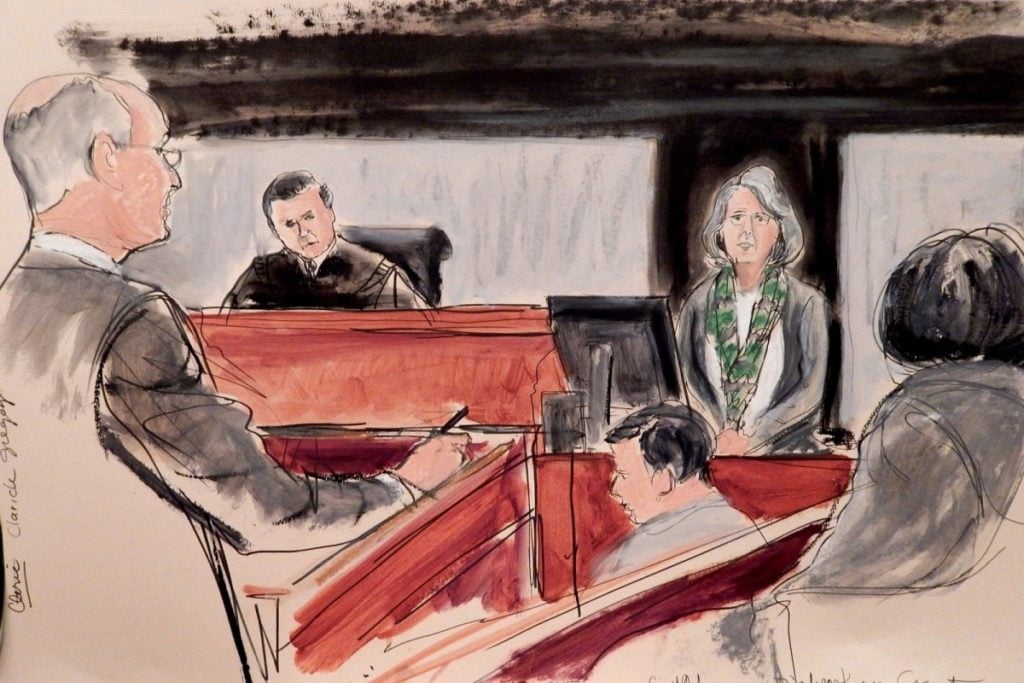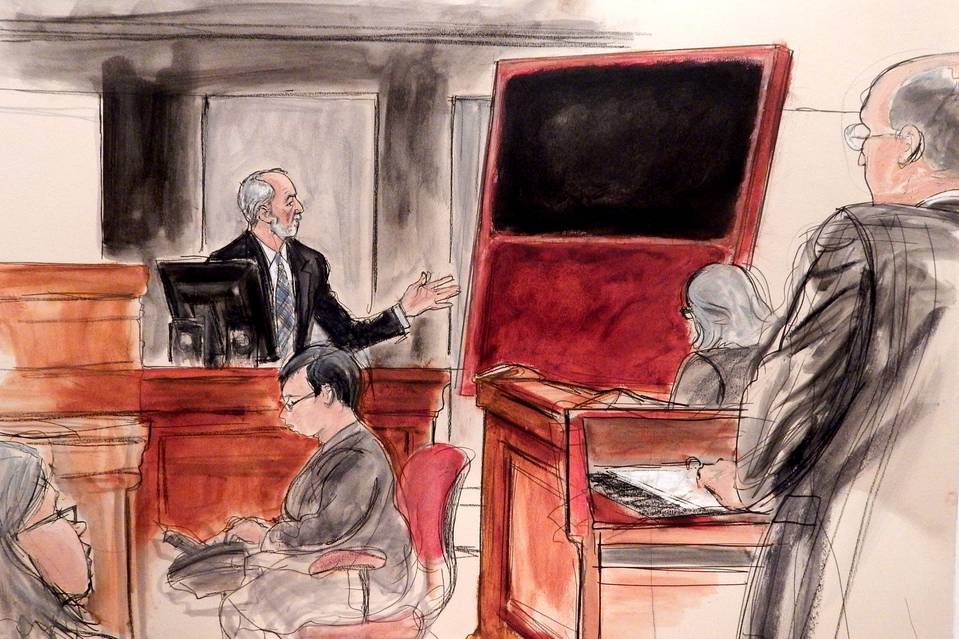Galleries
The 5 Best Moments of the Knoedler Fraud Trial So Far
There are tears, accusations, and a very fake Rothko painting.

There are tears, accusations, and a very fake Rothko painting.

Cait Munro

Today marks the halfway point for the Knoedler gallery forgery trial, which has captivated the art world this week. In honor of the case that’s produced some rather jaw-dropping anecdotes, here are the top five most shocking, outrageous, and noteworthy moments from past two weeks.
1. The first time we saw the faux-Mark Rothko painting:
The main painting—an $8.3 million fake Mark Rothko painting purchased from Knoedler by plaintiffs Domenico and Eleanore De Sole—didn’t make an appearance in court until the third day of the trial, but when it did, it did so with a bang. “The De Soles’ attorneys carted it haphazardly across the the courtroom immediately before his testimony—a startling contrast to the cautious white-glove treatment usually given to authentic blue-chip works by uniformed art handlers at auction—and propped it up on a large easel,” writes artnet News’s Eileen Kinsella.
As art historian David Anfam noted during his testimony, the work is noticeably smaller than a typical Rothko. (There’s also just something about knowing it is a fake that makes it look, well, fake.)
2. James Martin’s scathing testimony:
Art conservator James Martin, who took the stand this week, testified about his experience with Knoedler gallery, who hired him in 2008 to make what he calls “an objective examination” of two alleged Motherwells prior to a meeting with the Dedalus Foundation. After providing the gallery with his expert opinion—that several things about the works were inconsistent with the theory that they had been created in the mid-1950s—he was contacted by E.A Carmean, an art historian on contract with the gallery, with several pointed revisions (including the deletion of his main conclusion), which he refused to make.
Martin also examined the fake Rothko for the De Soles in 2011, and presented his findings to the jury: “I concluded that it was a deliberate fake with a common source to the others I examined.”
The conservator testified to having analyzed 16 paintings in total, and found that 14 used historically inaccurate materials, six had suspicious signatures, five showed signs of deliberate aging, and nine had been created on top of old paintings. He also described one faux-Jackson Pollock painting in which the signature read “Pollok.”

A courtroom sketch of Gretchen Diebenkorn Grant on the witness stand at the Knoedler gallery trial.
Photo: Elizabeth Williams, courtesy ILLUSTRATED COURTROOM.
3. Appearances by famous artist offspring:
Gretchen Diebenkorn Grant, daughter of painter Richard Diebenkorn, told the jury during the first week of trial that upon viewing several works at the gallery in the mid-1990s that were purportedly painted by her father, she felt that they were not right. She testified that when she voiced her concerns to Freedman, “[s]he didn’t say ‘Oh dear.”
“[Former MoMA curator] John Elderfield and Gretchen Diebenkorn Grant clearly said, as we promised in the opening, that the first works from Rosales were not right, and that’s what they told Freedman at the time,” Emily Reisbaum, an attorney for the De Soles, told artnet News via email.
This week, Mark Rothko’s son Christopher took the stand and was presented with a document claiming that he had “recognized” a painting as a work by his late father. Rothko was adamant that he never authenticated his dad’s works. While he did concede to calling one work “beautiful,” he claimed: “I didn’t want to go further than that because I didn’t want to be sitting here today.”
4. The admonition of the ADAA:
Martha V. Parrish, a veteran art dealer who helped draft the code of ethics for the Art Dealers Association of America (ADAA), testified that Freedman was wrong to be so quick to accept blue-chip artworks at well below market price.
If one work were available at a low price with a sketchy provenance, then it would be worthwhile to investigate, but a trove of them? “A reputable and responsible dealer would run like hell, because there are too many red flags flying for anyone to take the risk,” Parrish told the jury.

A courtroom sketch of Domenico De Sole on the witness stand with the fake Rothko painting he bought from Knoedler gallery.
Photo: Elizabeth Williams, courtesy ILLUSTRATED COURTROOM.
5. Eleanore De Sole’s emotional display:
Eleanore De Sole got emotional during her testimony last week, describing to the jury how she began her career as a receptionist making just $5,000 a year before working her way up at IBM, where both of her parents were employed. She began to cry at the mention of her parents, explaining that her mother had recently passed. She also told the jury that it was her parents who inspired her lifelong love affair with art.
“We had purchased a Rothko at that point, a work on paper; it was the most expensive piece we had ever bought and this was six-plus times the price,” De Sole said of the couple’s decision to purchase the $8.3 million supposed Rothko painting from Knoedler. “To be able to have a Rothko oil is very privileged, and to see one for sale, you couldn’t not be curious.”
She later recalled reading about the forgeries in a newspaper while in Miami for Art Basel in 2011. “Its provenance was exactly what we’d been told,” she said. “I went into a shaking frenzy and cried.”